|
Displaying items by tag: italy
A street in a small town in Italy bears the name of a British officer who risked court martial to save a Renaissance masterpiece from shelling in the Second World War.
Yet, Italian art experts have become so worried about the state of the 15th-century fresco dubbed “the greatest picture in the world”, that they have embarked on a major restoration project.
The work was only made possible with a hefty donation from a private citizen.
Piero della Francesca’s "The Resurrection," on display in Sansepolcro in north-east Tuscany, is widely hailed as one of the masterpieces of late 15th-century Italian art.
A very large painting by Guercino has been stolen from San Vincenzo church in Modena, Italy, the Agence France-Presse reports. The 1639 painting measures more than 9 feet tall and 6 feet wide, and depicts Mary accompanied by John the Evangelist and Saint Gregory. According to Italian art critic Vittorio Sgarbi, it is worth between €5–6 million ($6.7–8 million). The work was last seen around mid-day on August 10, a member of the church told the AFP.
“It’s an altarpiece with a magnificently dressed Saint Gregory,” Sgarbi told the AFP, “a monumental work from the first phase of the artist’s mature period.”
One of the Getty's most prized ancient artworks is hanging in a legal balance this week in Italy's highest court, leaving the L.A. museum's leaders feeling as if they have landed in a Franz Kafka tale, a judicial and bureaucratic nightmare they can neither understand nor escape.
But unlike a hapless Kafka character, the Getty has an inkling as to why its nearly life-size statue, known as "Victorious Youth" or the "Getty Bronze," is back in a maze of judicial and investigative proceedings. And rather than suffer passively, the Getty — the world's richest art institution, with a $6-billion endowment — may well draw a line.
Michelangelo's famous statue of the biblical figure David is at risk of collapse due to the weakening of the artwork's legs and ankles, according to a report published this week by art experts.
The findings, which were made public by Italy's National Research Council, show micro-fractures in the ankle and leg areas.
The "David" statue dates from the early 16th century and is housed in the Galleria dell'Accademia in Florence. The results of the report were published this week in the Journal of Cultural Heritage, a publication devoted to research into the conservation of culturally significant works of art and buildings.
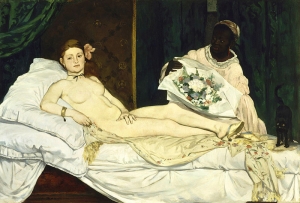
French president Francois Hollande has given special allowance to Édouard Manet’s (1832-1883) Olympia (1863), permitting the masterpiece to travel from Paris to Venice for an exhibition. It will be the first time the influential painting has left the French city since it was given to the nation in 1890. Olympia, which features a nude woman and her fully clothed maid, shocked audiences with its subject’s provocative gaze and the suggestion that she was a prostitute.
Olympia, which is part of the Musée d’Orsay’s collection, will travel to Italy to anchor an exhibition at the Doge’s Palace in Venice. The painting will appear alongside Titian’s (1485-1576) The Venus of Urbino (1538), which is on loan from Florence’s Uffizi Gallery, as part of the exhibition Manet: Return to Venice. The exhibition features 70 works including 42 paintings by Manet on loan from the Musée d’Orsay, which will received a considerable amount in fees for the unprecedented loan. A number of paintings will also be on loan from the Metropolitan Museum of Art in New York.
Manet: Return to Venice will explore how Italian artists such as Vittore Carpaccio (1460-1520), Antonello da Messina (1430-1479), and Lorenzo Lotto (1480-1556) influenced the French painter. The exhibition will be on view from April 25 to August 4, 2013.
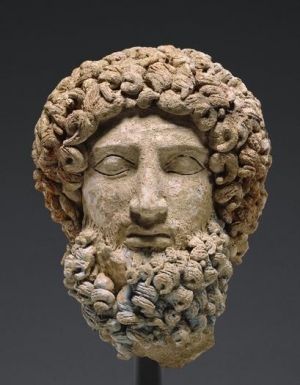
For years, Italy, Greece, and other ancient lands have accused American museums of ignoring evidence that antiquities in their collections were looted from archaeological sites. Five years ago, the Association of Art Museum Directors (AAMD) responded by making the requirements for acquiring ancient works much more stringent. The revised guidelines advised American museums against acquiring works unless solid proof existed that the artifact, prior to 1970, was outside the country where it was discovered in modern times, or was legally exported from that country after 1970.
1970 remains an important date, as it marks the year UNESCO put a stop to the illicit trafficking of antiquities. The year is now regarded as the standard cutoff for collecting. Works that appear on the market without documentation dating back that far are much more likely to have been stolen, looted, or smuggled out of their countries.
On Wednesday, January 30, 2013 the AAMD announced a few additional restrictions for American museums. The AAMD, which has 217 member museums in North America, now requires institutions to post a public explanation on the AAMD’s website if they acquire any ancient works with spotty ownership records. In addition, the museum much provide an image of the object, any known provenance information, and an explanation as to why they decided to acquire the work. If an institution fails to comply, they will be subject to ethical scrutiny and possible expulsion from the AAMD.
Officials hope that the tighter acquisition regulations will discourage American museums from obtaining questionable artifacts while supporting transparency between the United States and nations of origin who may lay claim to the antiquities.
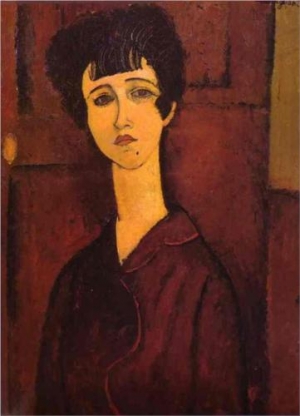
Following a two-year investigation conducted by the Italian art forgery unit, Christian Parisot, president of Rome’s Modigliani Institute, has been arrested. Police seized 18 works from Parisot including prints, bronzes, and a painting attributed to the Italian artist Amedeo Modigliani (1884-1920); the counterfeit works are said to be worth almost $8.7 million. The unit also apprehended forged certificates of authenticity from Parisot.
Parisot has worked with the Modigliani family for years and even served as secretary to Jeanne Modigliani, the artist’s daughter. Laura Nechtschein Modigliani, Jeanne’s daughter and the only living descendant of the artist, currently holds the rights over her grandfather’s works.
Modigliani’s oeuvre has proved problematic through the years; due to his consistent and distinctive style, Modigliani’s works are often subject to forgery. There are at least five catalogue raisonnés of the artist’s work and Parisot was in the process of compiling his own prior to his arrest.
The Toledo Museum of Art in Ohio returned a ceramic water vase, which depicts the Greek god, Dionysus turning pirates into dolphins, to the Italian government on Tuesday, January 9, 2013. The jug, which dates back to the sixth century BC, was likely looted from Italian soil years ago.
The Toledo Museum of Art purchased the jug in 1982 from art dealers who used falsified documents to hide the object’s dishonest past. Investigators revealed that the jug was smuggled out of Italy after it was illegally excavate sometime before 1981.
The United States Immigration and Customs Enforcement Agency announced that the Estruscan black-figure kalpis, which is valued at $665,000, was handed back to Italian officials following a ceremony held at the museum. While Italy currently holds reign over the work, the jug will remain on view in the museum’s Libbey Court until it leaves for Rome in late summer of this year.
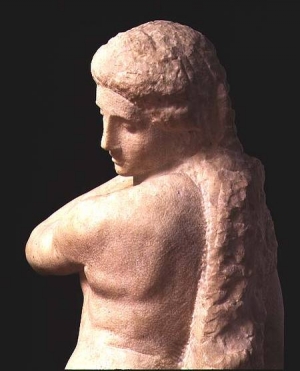
As part of a yearlong celebration of Italian culture hosted by Italy’s foreign minister, Michelangelo’s (1475-1564) iconic work, David-Apollo, will be go on view today at the National Gallery of Art in Washington, D.C. Minister Giulio Terzi di Sant’Agata unveiled the sculpture yesterday, December 12. David-Apollo will be on view in the West Building’s Italian galleries through March 3, 2013.
Michelangelo carved David-Apollo in 1530 for Baccio Valori, who served as the interim governor of Florence per the Medici pope Clement VII’s appointment. Michelangelo and the pope were at political odds, but the artist wished to make peace with the Medici through his work. Michelangelo never finished David-Apollo as he left Italy and never returned after Clement VII’s death.
Part of the Museo Nazionale del Barello’s collection in Florence, David-Apollo traveled to the National Gallery once before in 1949. The masterpiece’s installation in Washington over sixty years ago coincided with former president Harry Truman’s inaugural reception and attracted more than 791,000 visitors. In 2013, David-Apollo’s presentation will coincide with President Barack Obama’s inauguration.
The Year of Italian Culture, launched by Sant’Agata under the auspices of the President of the Italian Republic, Giorgio Napolitano, will bring a range of Italian masterpieces to nearly 70 cultural institutions across the United States. Works range from classical and Renaissance to baroque and contemporary and cover the realms of art, music, theater, cinema, literature, science, design, fashion, and cuisine.
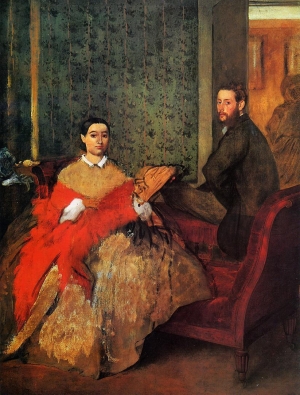
Patrons who are familiar with the permanent collection at Boston’s Museum of Fine Arts might become befuddled upon their next visit to the institution. Some of the museum’s finest works including Pierre-Auguste Renoir’s Dance at Bougival, the pivotal Claude Monet painting, La Japonaise: Camille Monet in a Japanese Costume, five works by Paul Cézanne, five more by Edouard Manet, and two of the masterpieces by Vincent Van Gogh are nowhere to be found.
While some of the works have been lent to museums in the United States, Japan, and Europe to enhance exhibitions, others have been rented to for-profit organizations. Loans between institutions are common practice, but compounded with the large number of works currently out on rent by the MFA, the museum’s own collection appears to be lacking. Currently, 26 of the MFA’s paintings are involved in exhibitions in Italy, which the institution received a hefty yet undisclosed fee for. Some of the works now on view in Italy are two paintings by John Singleton Copley and two Rembrandt portraits as well as single works by Eugène Delacroix, Paolo Veronese, Winslow Homer, John Singer Sargent, Paul Gauguin, Alberto Giacometti, and Pablo Picasso.
While the MFA is excited to be raising revenues, the act of charging fees for lending works has been a source of controversy. One of the main duties of public institutions, including art museums, is to share their collections with the public. Many objectors find the practice of lending works for profit to be in direct opposition to this goal.
Other major holdings that are not presently at the MFA are Diego Velázquez’s Luis de Gongora, two works by El Greco, two more by Gustave Courbet, the museum’s only painting by Edvard Munch, and arguably its greatest work by Edgar Degas, Edmondo and Therese Morbilli. While MFA officials argue that they are bolstering the museum’s international reputation, critics feel the institution is suffering for it.
|
|
|
|
|